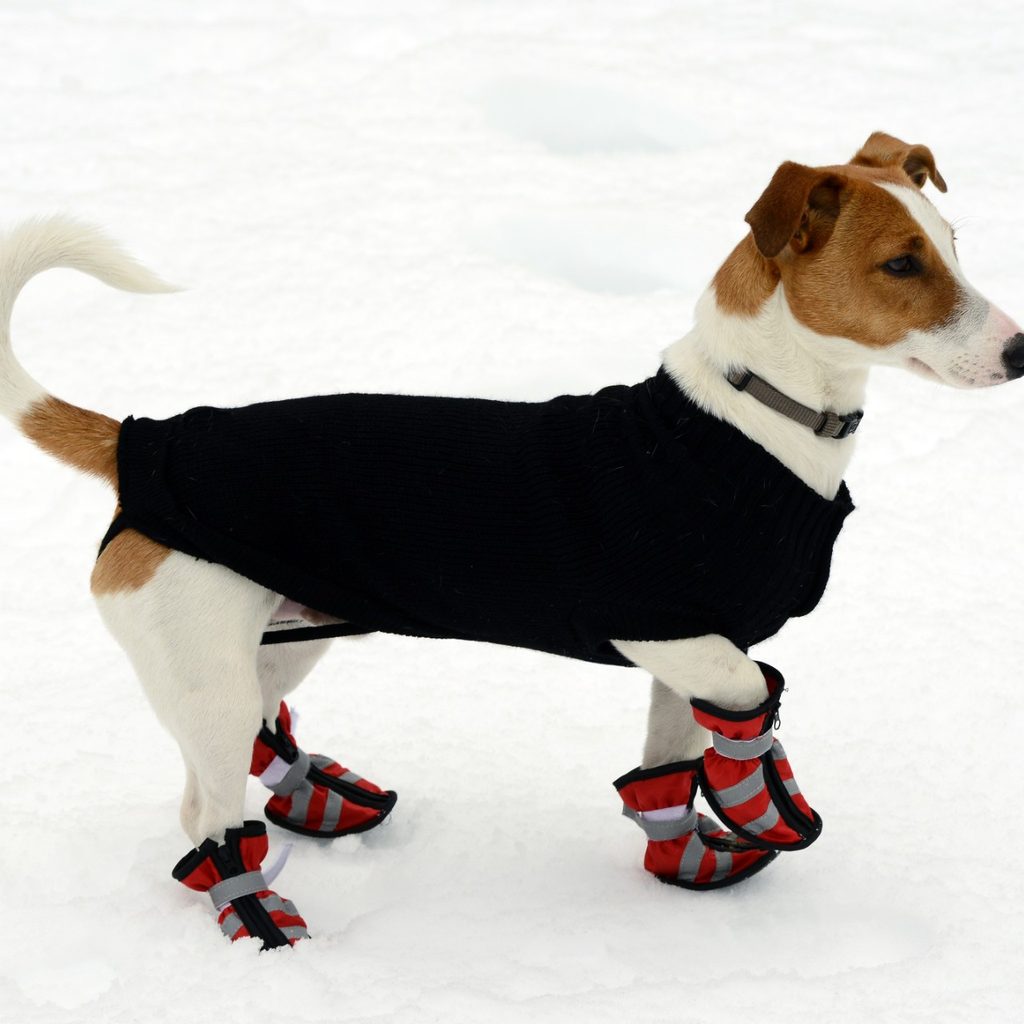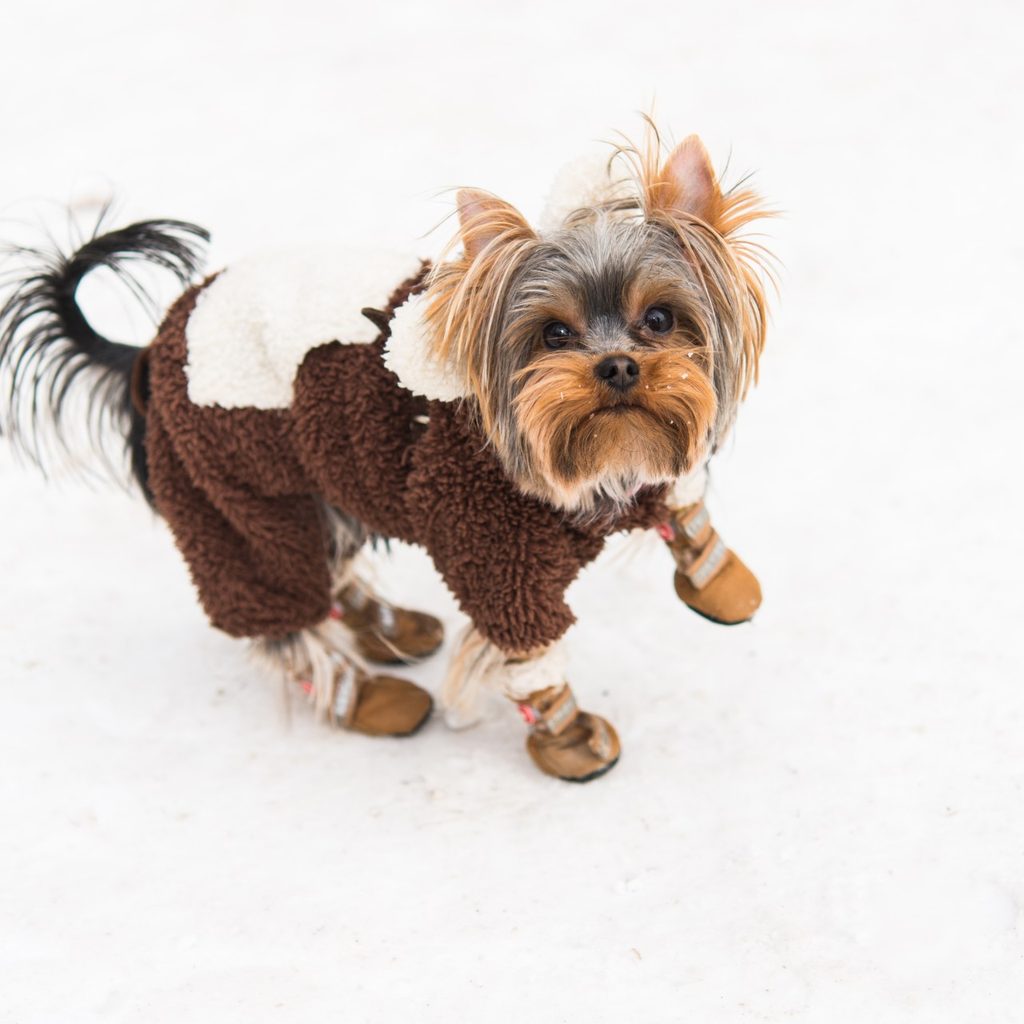Those sweet winter months are fun for dog walks. But just as dog walking during summer can hurt their paw pads, walking during winter may be a bit disagreeable to them as well, as snow and ice can make your dog a little uncomfortable. You wear protective gear during the winter, so it makes sense that your dog would have shoes or booties and other winter gear to protect it, right?
The answer isn’t so straightforward. Some people think dogs have enough protection with their fur and paw pads. Others think boots are a requirement when the temperatures fall no matter what the circumstances are. In reality, boots and booties will depend on the circumstances.
To decide whether your dog needs some protection from winter, you can ask yourself a series of questions to narrow down the answer. Let’s take a look at when dog shoes are appropriate.

Is it that cold?
Humans don’t have the luxury of an insulated coat, so temperatures can seem colder to you than they are to your dog. If you live in an area where temperatures don’t fall below freezing during the day, you may not need to worry about it at all.
Some snow isn’t a problem either if you get light coatings, and it remains powdery throughout the day. Dog paws are tough, and the hair can help slough off the snow before it becomes an issue.
Mild climates in the Southern states may not ever need dog shoes in winter. It’s a much bigger issue in the summer when temperatures soar, and the pavement can reach scalding levels of hotness.
What is my dog’s breed?
Different breeds have different fur types, and subsequently, different tolerances for cold. If you have a small, short-haired breed with a single coat (think chihuahuas), dog shoes in winter may be more appropriate than a husky, which is bred to live in the snow.
Ultra-long-haired breeds can also be an issue because fur can trap melting snow and ice more quickly than short-hair breeds. Labs have short double coats that don’t stick out much between paw pads, but a Yorkie may have more trouble.
If your dog is bred to live and work in cold climates — huskies or samoyeds, for example — shoes may be more of a burden than a help in all but the most extreme conditions.
Is the snow melting? Is it mostly ice?
In milder climates that receive some snow but experience above-freezing daytime temperatures, ice can be a serious issue. As the snow melts from the temperature and then comes in contact with your dog’s warm paw, it can melt just to the point of sticky ice.
That ice can cause some discomfort for your dog because the ice cuts into its paws. If you cannot clear the ice quickly, it can cause injury, even with dogs meant for the cold.
Is it only snow?
If you live out in the country, ice and snow are pretty straightforward. In the city or suburbs, there can be other substances present in your snow:
- Salt — A common deicer for the city, salt can wreak havoc on your dog’s paws. It’s drying, causing cracks in the pads, and dogs may try to lick it off. Too much salt and your pup could have digestive or other issues.
- Other chemicals — Deicers are full of different chemicals, not just salt. Some cities must clear snow quickly, so the mixture of chemicals is convenient for melting but harmful to a dog’s system.
- Antifreeze — Antifreeze is deadly. Period. If you suspect your city or even your neighbors are using an antifreeze mixture to keep roads and sidewalks safe for walking, use boots to ensure your pet doesn’t come in contact with it.
What kind of walk are you taking?
A quick trip into your backyard or even just down the street may not warrant the hassle of boots. If you’re talking a long walk where your dog will engage in lots of activity, boots may help protect your dog’s paws.
If you plan to be out for more than 30 minutes, you may want to consider boots to help keep your dog’s paws safe. Less time than that will depend more on the questions above.
How to get your dog to wear boots
Most dogs don’t know what to do with dog shoes at first. With some patience and consistency, you can train your dog to wear shoes properly.
- Start slow — Don’t just toss on some shoes and go out the door. Give your dog time to sniff the shoes in your house, praising the dog for interacting with them.
- Try them on — Dogs may need a time or two to try out boots, so start with small amounts of time in your backyard. Keep some little treats on hand to help your dog associate the shoes with good things.
- Gradually extend walking times — Start going with your dog on longer walks, steadily increasing your dog’s time in the shoes. Keep treats handy and praise often. Maybe go for walks in new territory to increase the fun.
- Keep working on it — It may take your dog a few tries to get comfortable with shoes, but many dogs will begin to associate the shoes with their favorite walk. Be consistent and put them on every time at first so that your dog doesn’t balk.
Dog shoes in winter

Shoes can help protect your dog’s paws from the ice and chemicals that come with city winters. They can also help breeds of dogs less suited to cold adapt and have a long, healthy relationship with winter activity.
Be patient with the process and explore the different types and styles of dog shoes. Your dog may need some time to get used to them, but in the end, you’ll feel better about your wintertime walks.


